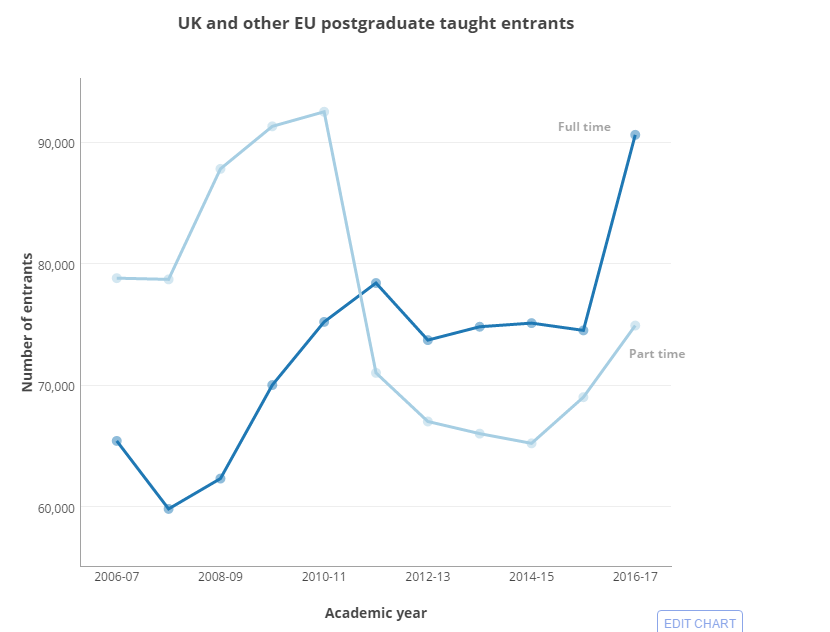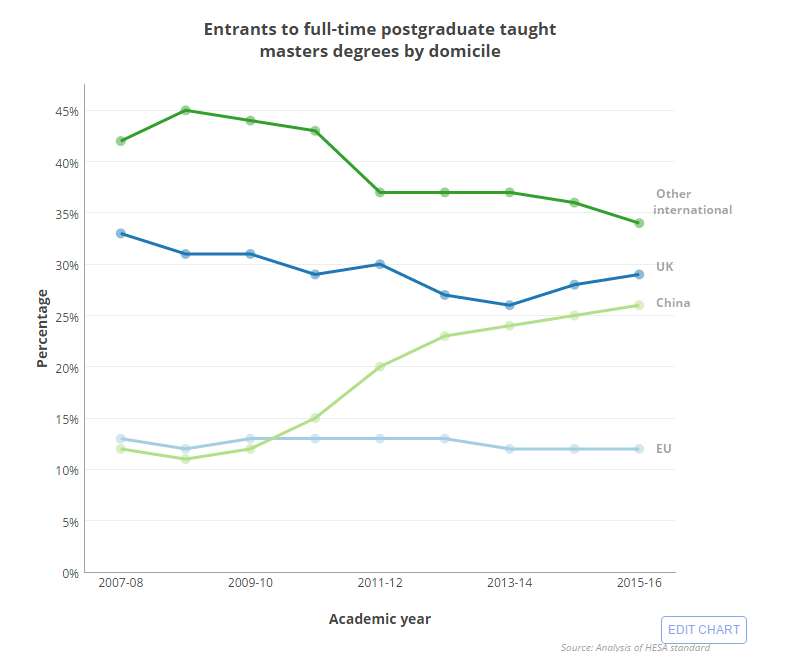The number of UK and European Union students starting taught postgraduate courses in England rose by almost a quarter following the introduction of a new loan system, new figures show.
Some 90,600 UK and EU students began full-time taught postgraduate courses at English universities in 2016-17, up by 16,100 (22 per cent) on the previous year, according to data released by the Higher Education Funding Council for England on 2 March.
The number starting part-time grew more modestly, but still shows an estimated increase of 8.6 per cent (5,900) to 74,900, Hefce says in Higher Education in England: Key Facts.
The increases are “likely to be attributable to the introduction of postgraduate loans” of up to £10,000 to pay for course fees and living costs that became available this year, it adds.
“Access to finance has been a barrier that has put postgraduate study out of reach for some students, with those from disadvantaged backgrounds being affected worst,” said Madeleine Atkins, Hefce’s chief executive. “This latest data is an encouraging indicator that the postgraduate loan scheme has improved access to postgraduate study.”

Statistics for the take-up of postgraduate loans are not yet available, although the government said it hoped that the new loans would increase the number beginning master's courses by 10,000 a year.
Announced by George Osborne, who was then chancellor, in December 2014, the loans are available to students under the age of 60 and will be repaid concurrently with undergraduate loans.
Hefce says that an estimated 15,400 UK and non-UK EU students started full-time postgraduate research courses last autumn, roughly the same number as the previous year, and another 4,000 began part-time research courses.
Rosemary Deem, vice principal (education) at Royal Holloway, University of London and chair of the UK Council for Graduate Education, welcomed the growth in postgraduate numbers but said the council “remains concerned about how, as recent graduates take out further study loans, student debt levels may rise to very high levels”.
There was a far more mixed picture when international postgraduate enrolments – which make up 60 per cent of taught postgraduate numbers – are considered, Hefce warns.
There is still “strong growth” in the number of Chinese students, with 32,500 starting taught master’s programmes in 2015-16, the latest year for which figures are available.
It means China’s share of the full-time UK taught postgraduate market stood at 26 per cent, up from 12 per cent in 2007-08.
Last year, there were, however, “large falls” in entrants from “key markets”, with Indian enrolments down 11 per cent to 4,800 in 2015-16 alone, while the number of Nigerian entrants fell by 20 per cent to 3,500.
It means Chinese postgraduate students’ proportion of the cohort is approaching the size of the group of international students from all other countries (now 34 per cent, down from 42 per cent in 2007-08).

According to Hefce, full-time domestic and EU undergraduate enrolments also grew by 1 per cent to a record 408,000 students in 2016-17, However, 2016-17 is “likely to be a peak year as the declining population of 18-year-olds, the consequences of the EU referendum and the transition from bursaries to loans for nursing students will put downward pressure on the number of entrants in 2017-18”, it said.




